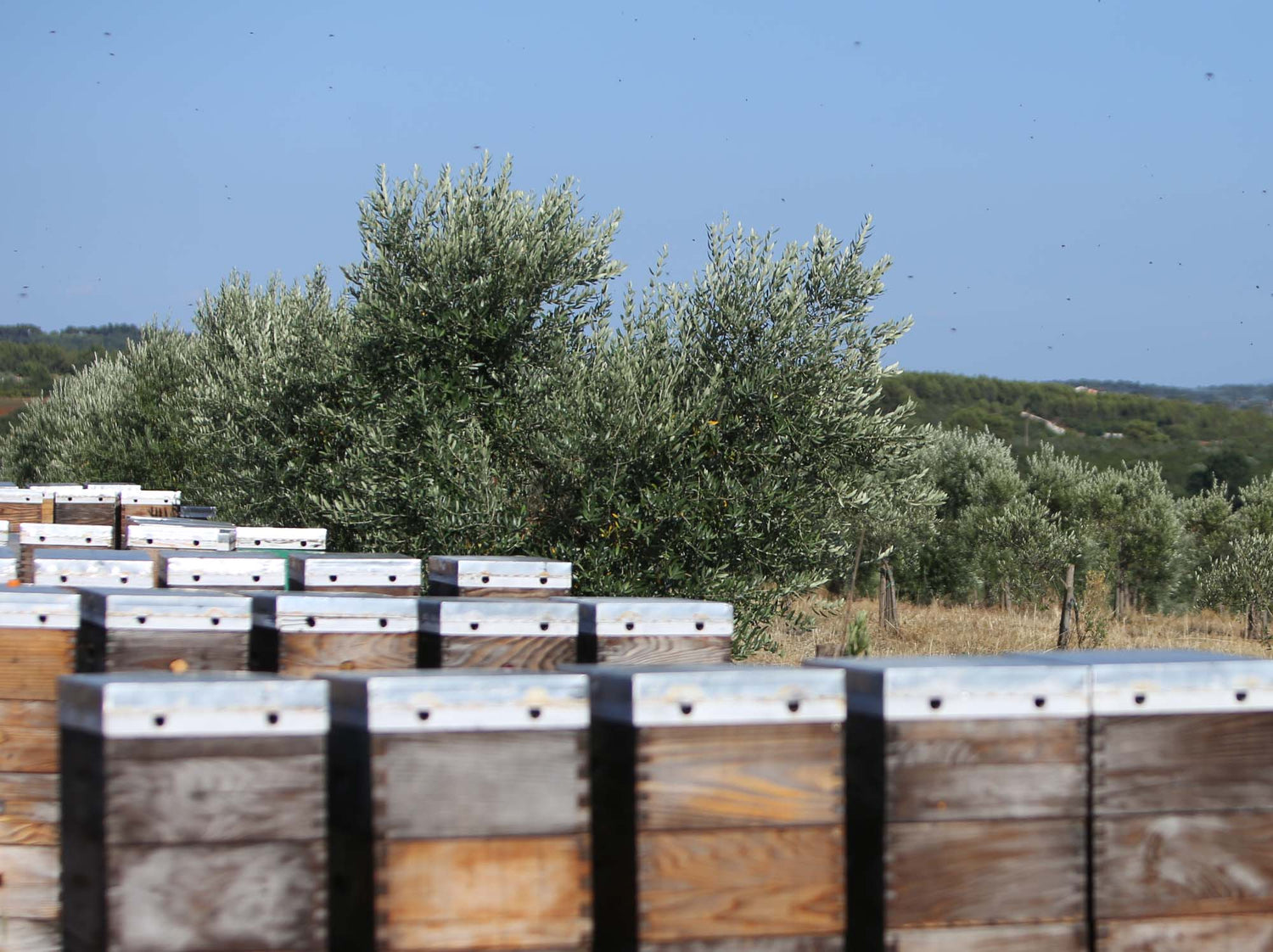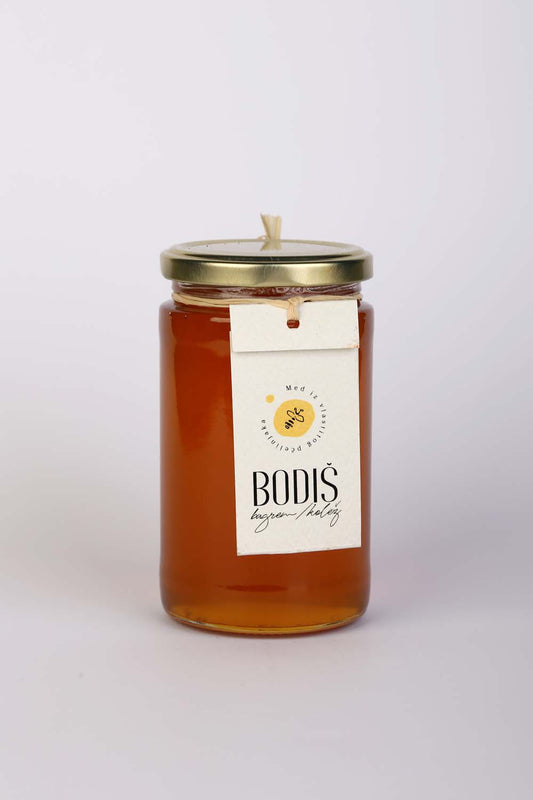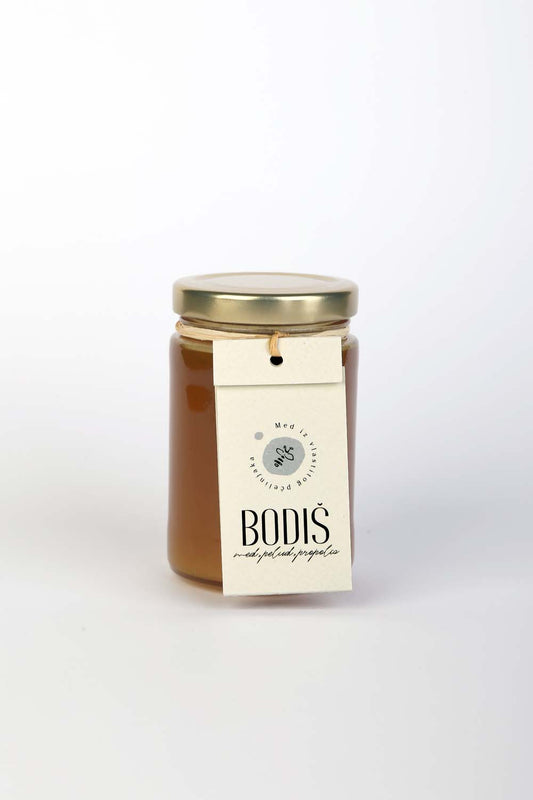Istrian honey
Istrian honey is specific for its aromas. It has an unavoidable Mediterranean touch that distinguishes it from the others.

5 types of honey
Istrian honey is specific in its aromas. Different from others. Honey production is delicate and depends on climatic conditions. The main pasture in Istria is acacia, then meadows, heather and heather, and on the continent forests (fir and spruce), chestnut, mountain meadows.
Honey / online store
-
Forest Honey
Regular price From €8,80 EURRegular priceUnit price per -
Honey Acacia/College
Regular price From €8,80 EURRegular priceUnit price per -
Honey, pollen, propolis - Apikompleks
Regular price €15,00 EURRegular priceUnit price per

Bees and hives
We have around 240 bee colonies that winter in southern Istria (in our olive groves), and during the rest of the year we move them, mainly to Gorski Kotar and Kordun.
The care and well-being of bees is our top priority.
-
Beekeeping with low attachments
We keep bees with low extensions, which allows us to mature the honey faster, make it easier to manipulate, and obtain specific honeys (ivy).
-
Watch bases made from your own wax
We have been using exclusively our own wax for watch bases for many years. This guarantees the quality and purity of the ingredients.
-
Breeding queen bees in a queen apiary
We raise queen bees ourselves, ensuring good genetic material in the apiary.
beekeeping
About bees
Climate conditions and bees
Our hives spend the winter in the Pula and Šišan areas, and in warmer weather they move to acacia trees in the Barban and Pazin areas. Some of the hives move to Gorski Kotar. Climate change and conditions greatly affect honey production and bee behavior. Changes in air temperature harm bees, so it is important not to disturb them while they are "sleeping" in the winter.
The role of bees
Bees are the only insect in the world that can produce food that humans can eat. They can fly at speeds of up to 24 km per hour, and their wings beat over 200 times per second. They are important pollinators and help pollinate one third of the food we eat. They have been producing honey for at least 150 million years. They never sleep, and worker bees can work up to 16 hours a day. They do not automatically know how to make honey; they learn it from older bees in the hive. A honey bee will visit around 50-100 flowers during a single flight in search of nectar.




